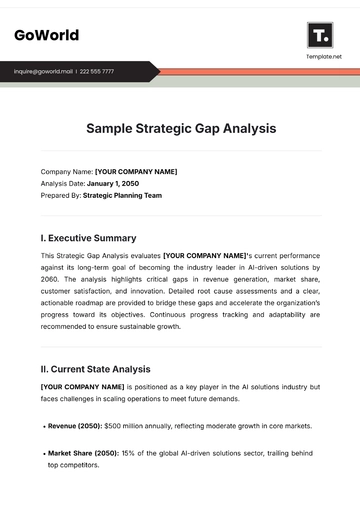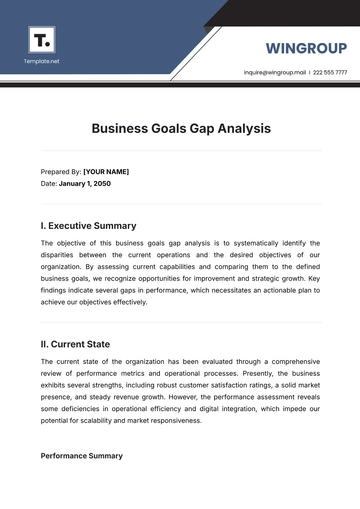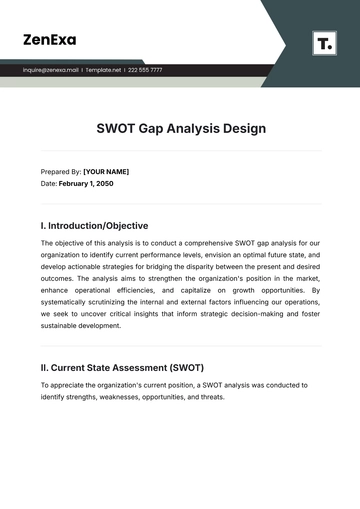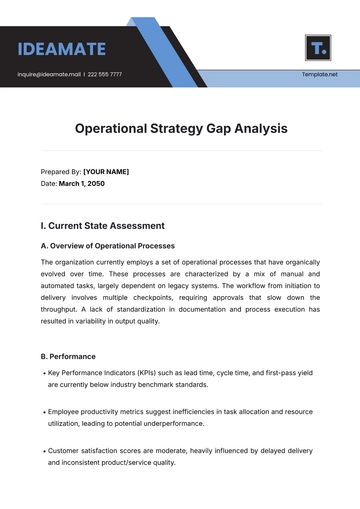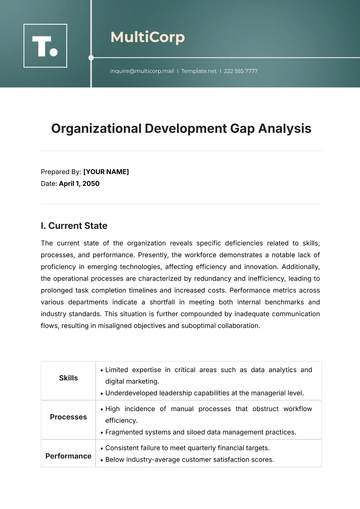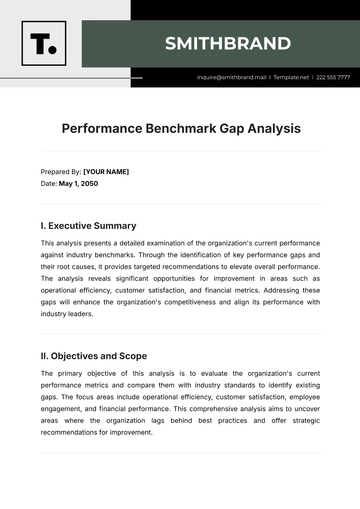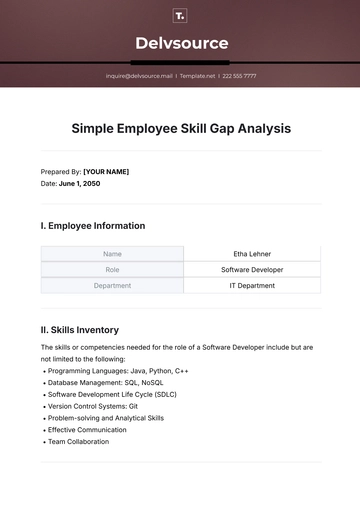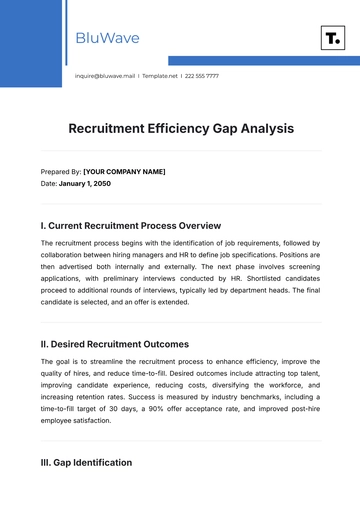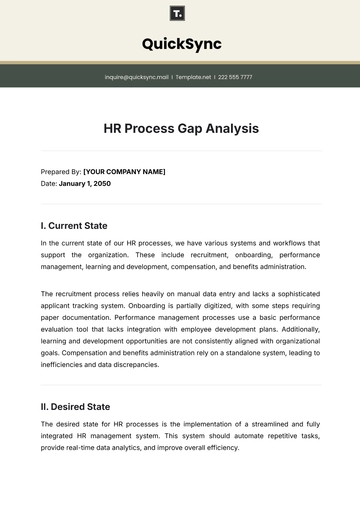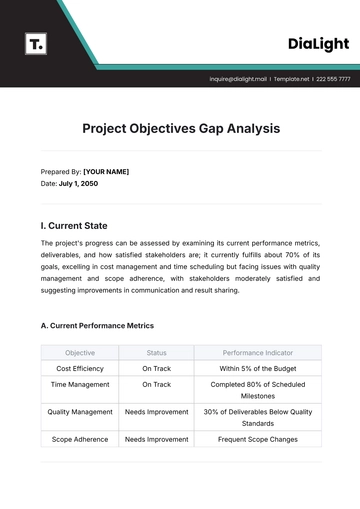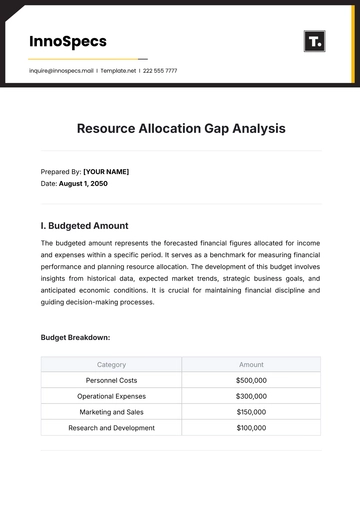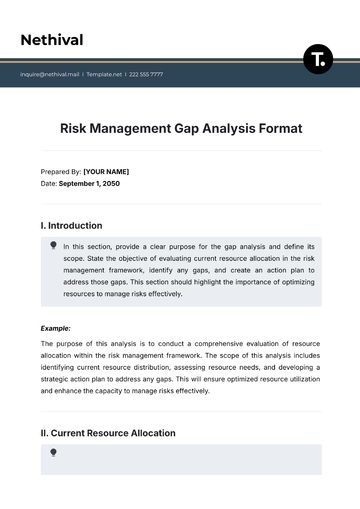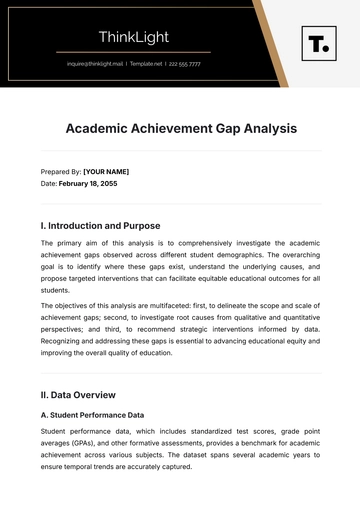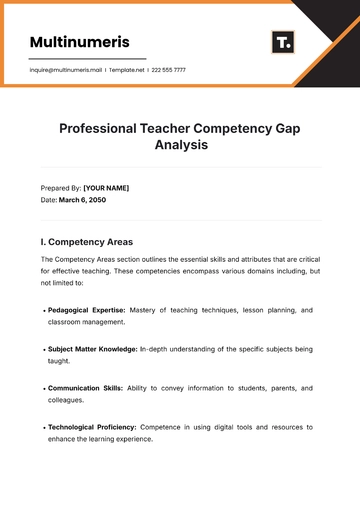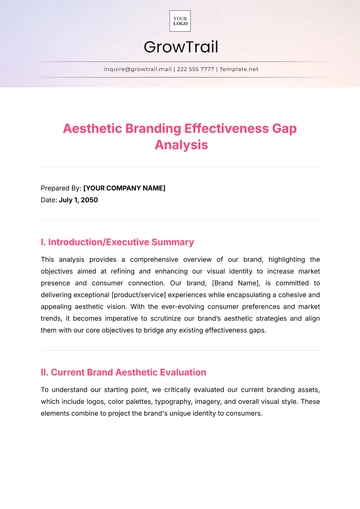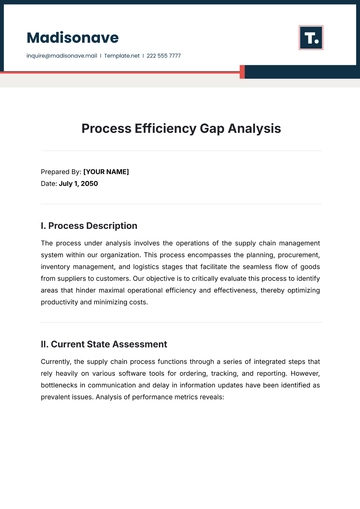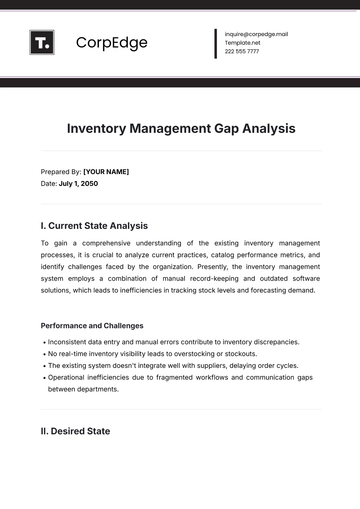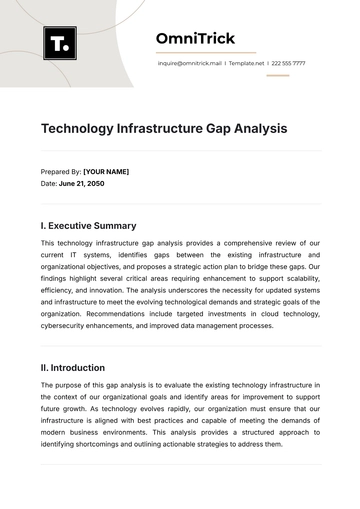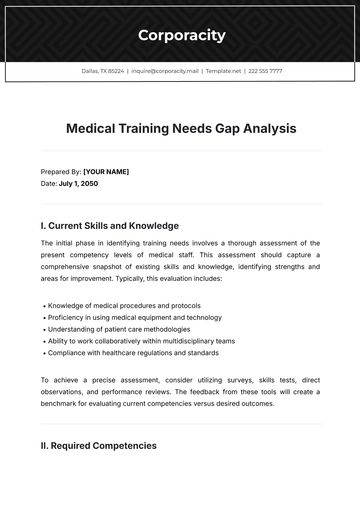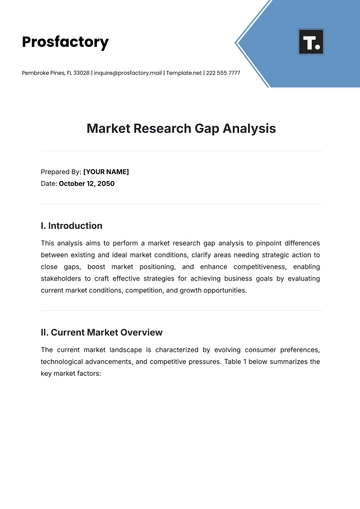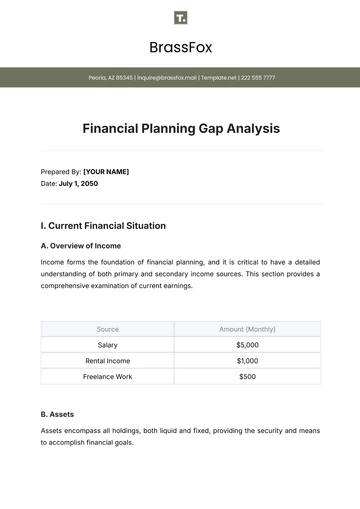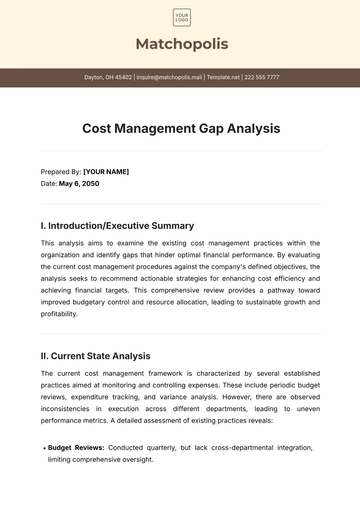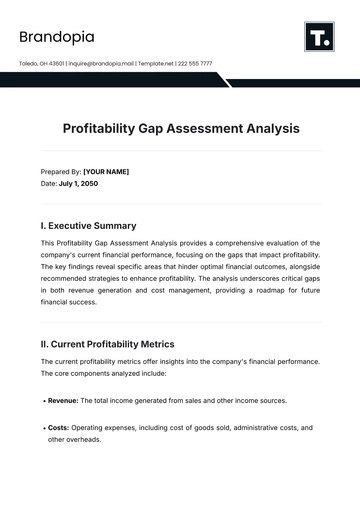Free Nursing Home Requirement Analysis
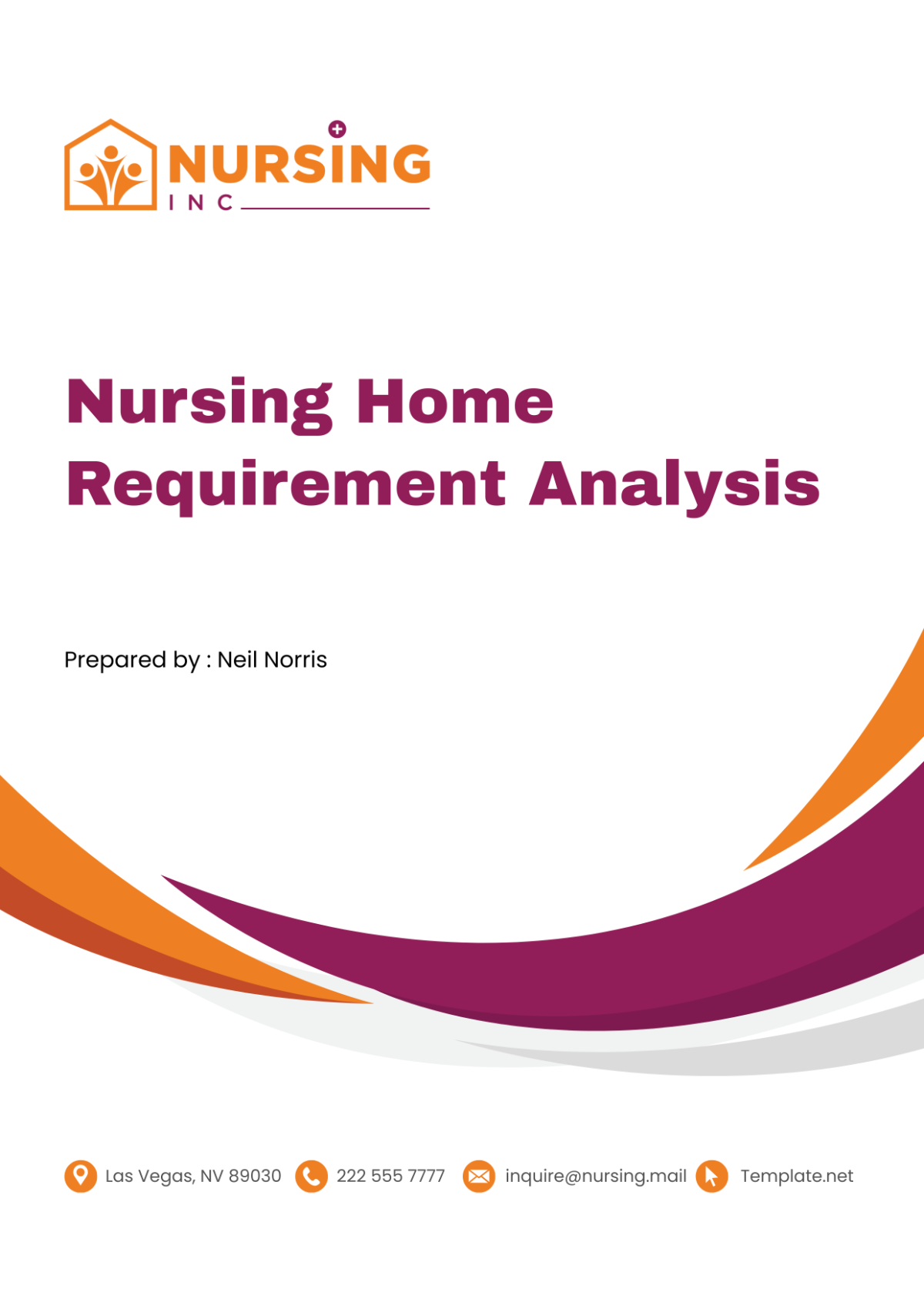
I. Introduction
A. Purpose
The purpose of this Nursing Home Requirement Analysis is to provide a detailed overview of the essential elements necessary for the establishment and operation of a nursing home facility. It aims to ensure compliance with regulatory standards, optimize resident care, and create a safe and conducive environment for both residents and staff.
B. Scope
This analysis encompasses various aspects including facility design, staffing requirements, medical equipment, technology integration, safety protocols, regulatory compliance, and resident care standards. It outlines the foundational framework needed to develop and manage a successful nursing home facility.
C. Audience
This document is intended for [Your Company Name]'s management team, stakeholders, architects, designers, healthcare professionals, and regulatory authorities involved in the planning, development, and implementation of nursing home facilities. It serves as a reference guide for all parties involved in the project to ensure alignment and understanding of the requirements and expectations.
II. Facility Design Requirements
A. Physical Layout
Common Areas:
a. Reception Area:
Welcoming and spacious reception area equipped with comfortable seating for visitors and residents.
Reception desk with administrative support for inquiries and assistance.
b. Dining Hall:
Large dining hall with sufficient seating capacity to accommodate all residents.
Accessible design with consideration for residents with mobility challenges.
Nutritious meal options catering to dietary restrictions and preferences.
c. Recreation Room:
Multi-purpose recreation room for social activities, entertainment, and therapeutic programs.
Equipped with recreational amenities such as board games, TV, and reading materials.
Flexible space for group activities and exercise classes.
d. Outdoor Spaces:
Accessible outdoor spaces including gardens, walking paths, and seating areas.
Safety features such as handrails and non-slip surfaces.
Opportunities for residents to enjoy nature and fresh air.
Resident Rooms:
a. Single Occupancy Rooms:
Private rooms with adequate space for a bed, storage, and personal belongings.
En-suite bathroom facilities with grab bars and emergency call systems.
Comfortable furnishings and personalized décor to create a homely atmosphere.
b. Double Occupancy Rooms:
Shared rooms designed to provide privacy and comfort for two residents.
Partitioned sleeping areas with separate storage and lighting options.
Consideration for roommates' compatibility and preferences.
c. Accessibility Features:
Wheelchair-accessible doorways, hallways, and bathrooms.
Adjustable fixtures and furniture to accommodate varying mobility levels.
Clear signage and visual cues for residents with cognitive impairments.
B. Safety and Accessibility
Emergency Exits and Evacuation Routes:
Clearly marked emergency exits with illuminated signage.
Regular drills and training for staff and residents on evacuation procedures.
Alternative exits for residents with mobility challenges.
Handicap Accessibility:
Ramps and elevators for seamless access to all levels of the facility.
Handrails and grab bars in corridors and bathrooms.
Accessibility features in common areas such as lowered countertops and designated parking spaces.
Fire Safety Measures:
Fire detection and suppression systems installed throughout the facility.
Regular maintenance and testing of fire alarms, extinguishers, and sprinkler systems.
Staff training on fire safety protocols and evacuation procedures.
Security Systems:
Access control systems to regulate entry and exit points.
Surveillance cameras in common areas and exterior spaces.
Security personnel or monitoring services for 24/7 surveillance.
III. Staffing Requirements
A. Healthcare Professionals
Registered Nurses (RNs):
Responsible for assessing resident health status, developing care plans, and administering medications.
Provide skilled nursing care and supervise other nursing staff.
Ensure compliance with regulatory standards and best practices in nursing care.
Licensed Practical Nurses (LPNs):
Assist RNs in providing direct patient care, including administering medications and wound care.
Monitor resident vital signs and report any changes to the nursing team.
Collaborate with other healthcare professionals to deliver comprehensive care to residents.
Certified Nursing Assistants (CNAs):
Assist residents with activities of daily living, including bathing, dressing, and toileting.
Provide emotional support and companionship to residents.
Document resident care activities and report any concerns to nursing staff.
Medical Director:
Oversees medical care delivery and ensures adherence to clinical protocols.
Provides guidance and supervision to nursing staff and other healthcare professionals.
Collaborates with administrators to implement quality improvement initiatives.
Social Workers:
Assess psychosocial needs of residents and provide counseling and support services.
Coordinate discharge planning and facilitate transitions to other levels of care.
Advocate for residents' rights and access to community resources.
B. Administrative Staff
Facility Manager:
Oversees day-to-day operations of the nursing home facility.
Manages staffing, budgeting, and regulatory compliance.
Serves as a liaison between management, staff, residents, and families.
Administrative Assistants:
Provide clerical support to administrative and clinical staff.
Maintain resident records, schedules, and correspondence.
Assist with billing, invoicing, and insurance claims processing.
Billing and Coding Specialists:
Ensure accurate coding and billing of medical services provided to residents.
Coordinate with insurance companies and government payers to process claims.
Monitor reimbursement trends and identify opportunities for revenue optimization.
C. Training and Certification
Mandatory Training Programs:
Orientation and onboarding for new staff members.
Annual training on infection control, resident rights, and safety protocols.
Continuing education opportunities to maintain licensure and certification.
Continuing Education Requirements:
Participation in workshops, seminars, and online courses relevant to job responsibilities.
Certification renewal requirements for nursing staff and healthcare professionals.
Ongoing skills development to enhance quality of care delivery.
IV. Medical Equipment and Supplies
A. Basic Medical Equipment
Equipment | Description |
|---|---|
Hospital Beds | Electrically adjustable beds with side rails |
Wheelchairs | Manual and motorized models for resident mobility |
Medical Carts | Portable carts for medication administration |
Vital Sign Monitors | Devices for measuring blood pressure, pulse, etc |
B. Specialized Equipment
Equipment | Description |
|---|---|
X-Ray Machines | Imaging equipment for diagnostic purposes |
Ventilators | Mechanical ventilators for respiratory support |
Dialysis Machines | Equipment for renal dialysis treatments |
C. Medications and Supplies
Supplies | Description |
|---|---|
Pharmacy Management System | Software for medication ordering and dispensing |
Medication Dispensing Cabinets | Secure storage units for medication control |
First Aid Kits | Stocked with essential supplies for emergencies |
V. Technology Integration
A. Electronic Health Records (EHR)
EHR Software Selection
Conduct a thorough assessment of EHR software options based on functionality, usability, interoperability, and cost.
Choose a system that meets regulatory requirements and integrates seamlessly with existing workflows.
Consider user feedback and recommendations from other healthcare facilities.
Implementation Plan
Develop a comprehensive implementation plan outlining timelines, roles, and responsibilities.
Coordinate with EHR vendors, IT staff, and end-users to ensure a smooth transition.
Provide training and support to staff members to maximize adoption and utilization.
Staff Training
Offer training sessions on EHR functionality, documentation standards, and data security protocols.
Provide ongoing support and resources for staff members to enhance proficiency and efficiency.
Monitor EHR usage and address any issues or challenges encountered by users.
B. Telemedicine Solutions
Video Conferencing Platforms
Evaluate telemedicine platforms for their video quality, reliability, and ease of use.
Ensure compatibility with existing hardware and software systems.
Establish protocols for scheduling virtual appointments and conducting remote consultations.
Remote Monitoring Devices
Research remote monitoring devices for tracking vital signs, medication adherence, and activity levels.
Select devices that are user-friendly, accurate, and compatible with EHR systems.
Train staff members on device setup, troubleshooting, and data interpretation.
Telehealth Policies and Procedures
Develop policies and procedures for telehealth services, including informed consent, privacy protection, and reimbursement.
Establish guidelines for conducting virtual assessments, prescribing medications, and managing emergencies.
Educate residents and families on the benefits and limitations of telehealth services.
VI. Regulatory Compliance
A. Licensing and Certification
State Regulations
Familiarize with state licensing requirements for nursing home facilities, including staffing ratios, safety standards, and quality assurance measures.
Obtain necessary permits and approvals from state regulatory agencies before opening the facility.
Stay updated on changes to state regulations and ensure ongoing compliance.
Federal Requirements (e.g., CMS)
Adhere to federal regulations set forth by the Centers for Medicare & Medicaid Services (CMS), including Conditions of Participation (CoPs) and Quality Assurance and Performance Improvement (QAPI) standards.
Participate in CMS surveys and inspections to maintain certification and eligibility for reimbursement.
Implement policies and procedures to address deficiencies identified during surveys and audits.
Accreditation Standards (e.g., Joint Commission)
Pursue accreditation from recognized accrediting bodies such as The Joint Commission or the Commission on Accreditation of Rehabilitation Facilities (CARF).
Align policies and practices with accreditation standards related to patient safety, quality improvement, and resident-centered care.
Engage in ongoing performance improvement initiatives to maintain accreditation status.
B. Quality Assurance and Performance Improvement (QAPI)
Quality Measures Tracking
Establish metrics for monitoring key performance indicators related to resident care, safety, and satisfaction.
Collect and analyze data regularly to identify trends, areas for improvement, and best practices.
Implement action plans to address performance gaps and promote continuous quality improvement.
Performance Improvement Projects
Develop and implement targeted projects to address specific quality improvement goals identified through data analysis.
Engage interdisciplinary teams in project planning, execution, and evaluation.
Evaluate the effectiveness of interventions and make adjustments as needed to achieve desired outcomes.
C. Privacy and Security
HIPAA Compliance
Ensure compliance with the Health Insurance Portability and Accountability Act (HIPAA) regulations regarding the privacy and security of protected health information (PHI).
Implement administrative, technical, and physical safeguards to protect PHI from unauthorized access, disclosure, or misuse.
Conduct regular HIPAA training for staff members and enforce policies and procedures to safeguard resident privacy.
Data Security Measures
Implement encryption, access controls, and audit trails to secure electronic health records and other sensitive data.
Regularly update software systems and infrastructure to address vulnerabilities and mitigate cybersecurity risks.
Establish incident response protocols for responding to data breaches or security incidents promptly.
VII. Resident Care Standards
A. Personalized Care Plans
Assessment and Evaluation Procedures
Upon admission and at regular intervals thereafter, comprehensive assessments are conducted to identify residents' physical, emotional, and psychosocial needs. These assessments involve gathering medical history, evaluating functional abilities, and assessing cognitive status. Residents and their families are actively involved in care planning discussions to incorporate their preferences, goals, and values into individualized care plans. Care plans are regularly reviewed and updated based on changes in residents' conditions, preferences, or treatment goals.
Individualized Care Goals
Individualized care goals are established based on residents' assessment findings, medical diagnoses, and functional abilities. These goals prioritize resident preferences and autonomy to promote person-centered care. Collaborative care teams develop strategies for achieving care goals and optimizing residents' quality of life. Goals may include maintaining or improving mobility, managing chronic conditions, promoting social engagement, and enhancing overall well-being.
B. Activities of Daily Living (ADL) Assistance
Bathing and Personal Hygiene
Residents receive assistance with bathing, grooming, and oral care according to their preferences and abilities. Staff members respect residents' privacy and dignity during personal care activities and offer support as needed. Adaptive equipment and techniques are used to promote independence and safety in ADLs, while maintaining a comfortable and hygienic environment.
Meal Assistance
Residents who require assistance with meal preparation, feeding, or hydration receive personalized support based on their abilities and nutritional needs. Meals are served at appropriate times and in accordance with dietary restrictions and preferences. Staff members monitor residents' intake and communicate any changes or concerns to the healthcare team to ensure proper nutrition and hydration.
Mobility Support
Residents receive assistance with transferring, walking, and positioning to prevent falls and promote mobility. Staff members encourage regular exercise and physical activity to maintain strength, flexibility, and balance. Assistive devices such as walkers, canes, and wheelchairs are utilized to support safe mobility and independence.
C. Social and Recreational Programs
Group Activities
Residents have access to a variety of social and recreational activities designed to engage them and promote socialization. Activities are tailored to residents' interests, cultural backgrounds, and cognitive abilities. Opportunities for community outings and special events are provided to enhance residents' overall quality of life and sense of belonging.
Entertainment Events
Regular performances, movie nights, and themed parties are organized to provide entertainment and stimulation for residents. Collaboration with local performers, volunteers, and community groups enriches residents' leisure experiences. Feedback from residents and families is solicited to ensure activities are enjoyable, meaningful, and reflective of their preferences and interests.
VIII. Conclusion
A. Summary of Requirements
The Nursing Home Requirement Analysis outlines essential elements necessary for the successful operation of a nursing home facility. Key requirements include facility design, staffing, technology integration, regulatory compliance, and resident care standards. Adhering to these requirements is crucial for ensuring the delivery of high-quality care and services to residents.
B. Next Steps
The next steps for [Your Company Name] involve the development and implementation of the nursing home facility. Specific tasks, timelines, and responsible parties for each phase of the project are identified, from design and construction to licensing and operations. Collaboration and communication among stakeholders are encouraged to facilitate a successful and efficient project execution.
- 100% Customizable, free editor
- Access 1 Million+ Templates, photo’s & graphics
- Download or share as a template
- Click and replace photos, graphics, text, backgrounds
- Resize, crop, AI write & more
- Access advanced editor
Ensure comprehensive understanding of nursing home requirements with the Nursing Home Requirement Analysis Template from Template.net. This editable and customizable template assists in evaluating regulatory, operational, and resident needs. Tailor it effortlessly using our Ai Editor Tool for personalized analyses. Streamline planning and enhance compliance with this essential template.

